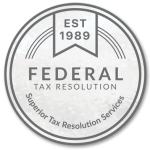IRS TAX TIME GUIDE ON DATA
April 10, 2021 - Douglas Myser
IRS tax time guide on data. The Internal Revenue Service urged people to continue practicing proper cybersecurity habits by securing computers, phones and other devices. Scams and schemes using the IRS as a lure can take on many variations, so practicing personal information security is vital. The Tax Time Guide is a news release by the IRS, a resource to help taxpayers file an accurate tax return and protect data. Additional help is available in Publication 17, Your Federal Income Tax, on IRS.GOV The works with the Security Summit, a partnership with state tax agencies and the private sector tax industry, to help protect taxpayer information and defend against identity theft. Taxpayers and tax professionals can take steps to help in this effort by doing things like minimizing cybersecurity footprints, staying vigilant in protecting personal tax and financial information and being aware of common scams and schemes. The IRS doesn't initiate contact with taxpayers by email, text messages or social media channels to request personal or financial information. Generally, the IRS first mails a paper bill to the person who owes taxes. In some special cases, the IRS will come to the person's house or business. IRS tax time guide on data.
People should be alert to scammers posing as IRS agents trying to steal information. There are ways to know if it's really the IRS calling or knocking on your door. Protect personal information. Treat personal information like cash--don't hand it out to anyone. Social Security numbers, credit card numbers, bank and even utility account numbers can be used to help steal a person's money or open new accounts. Safeguard personal date. Provide a Social Security number only when necessary. Like when your conducting financial transactions. with institutions you know to be reputable. Use strong passwords to protect information. Use a password phase or series of words that will be easy for you to remember. Use at least 10 characters, 12 is ideal for most home users and try to be unpredictable with your passwords.
